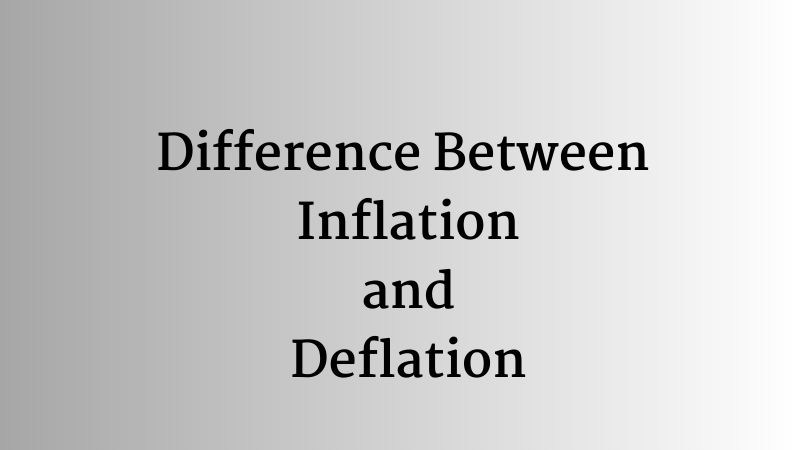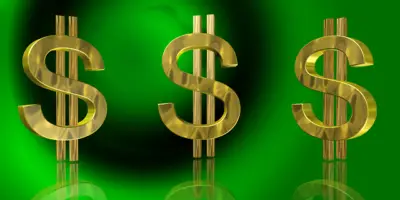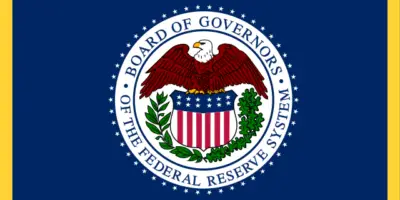What is the Difference Between Inflation and Deflation?

In economics, two terms hold significant importance due to their far-reaching effects on economies, businesses, and everyday life: Inflation and Deflation. These phenomena describe opposing trends in the purchasing power of money and have the power to shape economic landscapes in profound ways. Let’s delve into what is the difference between inflation and deflation, their causes, consequences, and the implications they have on individuals and societies.
Inflation: The Rising Tide
Inflation refers to the general increase in the price levels of goods and services within an economy over a specific period. When inflation occurs, the purchasing power of money diminishes, meaning that each unit of currency can buy fewer goods and services than it could previously. Inflation can be caused by various factors, including:
Demand-Pull Inflation occurs when demand for goods and services exceeds supply, leading to higher prices. This can be caused by increased consumer spending or government expenditures. Cost-Push Inflation occurs when production costs increase, causing businesses to pass on these costs to consumers.
Built-In Inflation, also known as wage-price inflation, occurs when workers demand higher wages, prompting businesses to raise prices to cover these costs. Central banks play a crucial role in controlling inflation by adjusting interest rates and the money supply. If a central bank increases the money supply excessively, it can lead to demand-pull inflation.
Consequences of Inflation
Moderate inflation is normal in a growing economy, promoting spending and investment. However, high and unpredictable inflation can have negative effects, such as reduced purchasing power, uncertainty for businesses, distortion of economic signals, and savings losses. Consumers struggle to maintain their living standards, businesses face uncertainty, and savings may lose value over time, discouraging saving and encouraging spending.
Example of Inflation
Hyperinflation in Zimbabwe
In the late 2000s, Zimbabwe experienced hyperinflation, with prices of goods and services doubling or even tripling within hours. At its peak, inflation reached an astronomical rate of over 89.7 sextillion percent annually. Citizens had to carry large bags of cash just to buy basic necessities.
Oil Price Inflation (1970s)
During the 1970s, a series of oil supply shocks led to a significant increase in oil prices. This oil price shock caused costs to rise across various industries, leading to broader inflationary pressures. It’s an example of cost-push inflation.
Venezuela’s Inflation Crisis
In recent years, Venezuela has faced hyperinflation due to a combination of factors, including economic mismanagement, falling oil prices (a major source of revenue), and a loss of confidence in the local currency. Prices of goods and services surged dramatically, making it extremely challenging for citizens to afford basic necessities.
Deflation: The Downward Spiral
Deflation, on the other hand, is the opposite of inflation. It refers to a general decrease in the price levels of goods and services. While this might sound appealing, deflation can have severe economic consequences:
Causes of Deflation
Decreased demand, technological advancements, and excessive debt can all contribute to a decline in prices. Decreased demand can result from reduced spending by consumers and businesses, while technological advancements can increase productivity and lower production costs.
Consequences of Deflation
Consumers may delay purchases due to lower prices, reducing demand. Businesses may delay investment due to lower future profits due to falling prices. Debt burden increases as prices and incomes fall, causing difficulties in repayment. Reduced wages may lead to lower consumer spending as businesses cut wages.
Examples of Deflation
The Great Depression
The 1930s saw a period of severe deflation in many parts of the world, including the United States. As economic activity plummeted, demand for goods and services fell, causing prices to drop. Widespread unemployment and reduced consumer spending exacerbated the deflationary spiral.
Japanese Deflation (1990s-2000s)
Japan experienced a prolonged period of deflation starting in the 1990s, often referred to as the “Lost Decades.” Despite efforts to stimulate the economy, Japan faced persistent deflation due to factors such as declining consumer spending and a struggling banking sector.
Technology Deflation
Certain technology products, like computers and smartphones, have experienced consistent deflation over the years. As technological advancements increase productivity and efficiency, prices for these goods tend to decline even as their quality improves.
Finding the Balance
Economies ideally strive for a balance between inflation and deflation, aiming for stable and predictable price levels. Central banks and governments use various tools to manage these forces and maintain economic stability.
Conclusion
Inflation and Deflation represent opposing economic forces that can profoundly impact individuals, businesses, and entire economies. While moderate inflation can be conducive to economic growth, high or unpredictable inflation, as well as deflation, pose considerable challenges. Striking the right balance through sound monetary and fiscal policies is crucial for fostering healthy economic environments that promote sustainable growth and stability.


